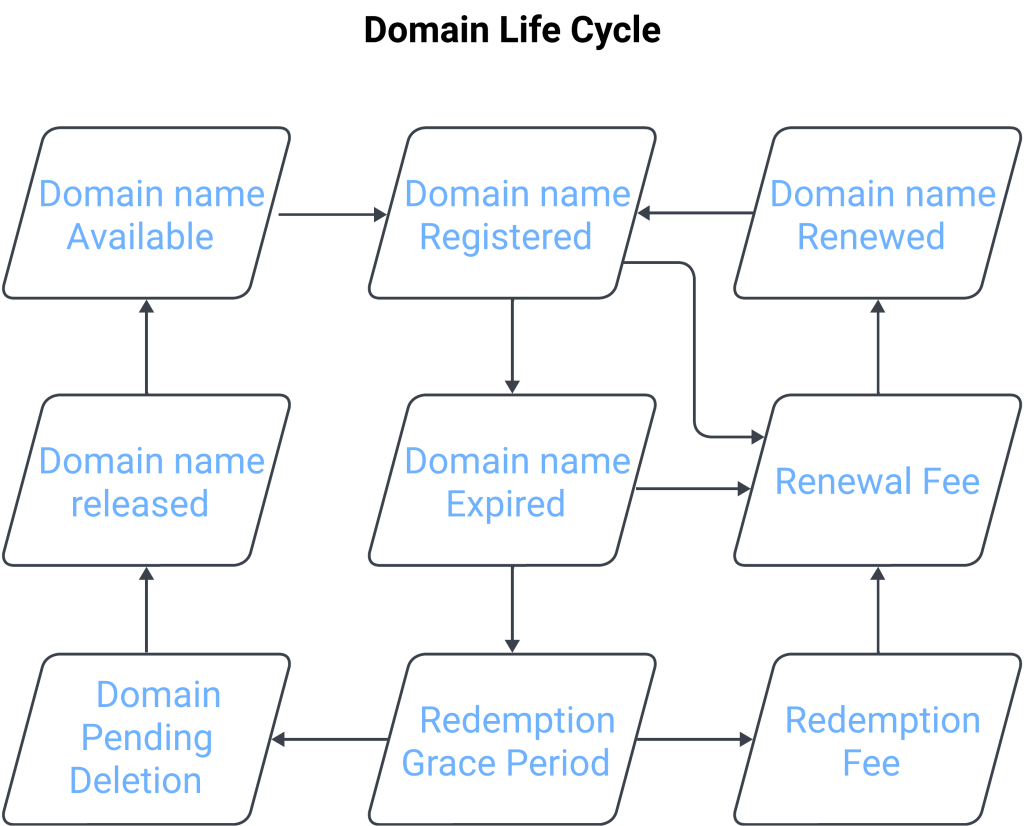This post is also available in:
Français
Navigating the Domain Life cycle: From Registration to Renewal or Expiration
When you enter the world of websites and online branding, understanding the domain life cycle is as crucial as knowing the alphabet. A domain name, much like a piece of property, goes through several stages from the moment it’s registered until it’s either renewed or left to expire. Here’s a breakdown of this life cycle.
It’s important for domain owners to be aware of these stages to avoid service interruptions or losing ownership of a domain. Many choose to set up automatic renewals to bypass the risk of forgetting to manually renew their domain names.

1. Domain Registration
The journey begins when an individual or organization selects a domain name and registers it with a domain registrar. This registration is typically done on an annual basis, but you can register a domain for multiple years at a time, up to 10 years.
2. Active Domain
Once registered, the domain is active. The owner can attach it to a website, set up email addresses, and more. During this period, the owner has full control over the domain, provided they adhere to the registrar’s terms of service.
3. Domain Renewal
As the expiration date approaches, the domain owner must decide whether to renew the domain. Renewal can be manual or automatic, depending on the owner’s preference and the settings chosen at the time of registration or modified afterwards.
4. Expiration Period
If the domain is not renewed, it enters the expiration period. The length of this period can vary by registrar, but it usually lasts for about 30 days. During this time, the website and related services may be deactivated, but the original owner can still renew the domain.
5. Redemption Grace Period
Following expiration, if the domain is not renewed, it enters a Redemption Grace Period (RGP). This is typically the last chance for the original owner to reclaim the domain, but the cost of redemption is significantly higher than a standard renewal. The RGP can last from 30 to 90 days, depending on the registrar’s policies and the domain’s top-level domain (TLD).
6. Pending Delete
If the original owner does not redeem the domain during the RGP, the domain then moves into the Pending Delete phase. This phase lasts about five days, during which the domain cannot be renewed or registered by anyone. It’s effectively being purged from the registrar’s database.
7. Domain Release
At the end of the Pending Delete phase, the domain is released back into the pool of available domain names. Once released, anyone can register the domain on a first-come, first-served basis.
At this point, it is possible for the original owner to register the domain again, but there is no way to guarantee that they will be able to register it before someone else. If the domain is a .com or has high traffic, it is almost certain that it will be registered by a reseller. You may opt to buy your domain through the reseller, albeit at a significantly marked-up price.
Still need help?
If you are in need of assistance, you can contact our support staff using one of the following methods:
Send us an email – 24/7/365
- Technical Support
- Billing Issues
- Sales Inquires
Live Chat – 24/7/362
Access our Live Chat support team from your Easyhosting Portal
Phone Support – Monday to Friday, 9:00am to 7:00pm EST
Call one of our Phone Support team members anytime between 9:00am and 7:00pm, eastern time at 1-888-390-1210.
